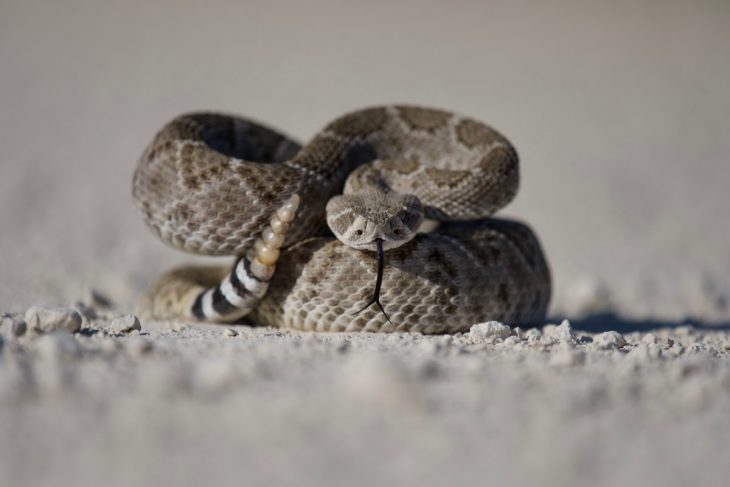
The world of reptiles is truly fascinating, especially when it comes to the rattlesnake. This remarkable creature, known for its distinctive tail rattle, is full of surprises. Although they may seem a little scary, rattlesnakes play an essential role in the ecosystem. Let’s embark on a journey to learn more about this intriguing reptile with these 11 rattlesnake facts for kids.
Rattlesnakes Are Famous For Their ‘Rattle’
The rattlesnake is best known for its namesake rattle, a unique feature found at the end of its tail. This rattle is made up of interlocking segments that create a buzzing sound when vibrated. Rattlesnakes use this sound to ward off potential threats, making it their very own warning system.
Rattlesnakes Are Part of the Pit Viper Family
Rattlesnakes belong to the Pit Viper family. They are called this because of the heat-sensitive pits located on each side of their head, between the eye and nostril. These pits are incredibly sensitive and can detect tiny changes in temperature, allowing the rattlesnake to find its warm-blooded prey even in the dark!
There Are Many Species of Rattlesnakes
Scientists have identified about 36 species of rattlesnakes. They come in different colors, sizes, and patterns, but all share the common feature of the rattling tail. Some of the most famous species include the Eastern Diamondback, Western Diamondback, Mojave, and Timber rattlesnake.
They Give Live Birth
Unlike many reptiles that lay eggs, rattlesnakes give live birth. Baby rattlesnakes, called ‘neonates’, are born fully equipped with venom and a tiny, pre-button rattle. However, they must wait for their first shed to acquire a functioning rattle.
They Have a Varied Diet
Rattlesnakes are carnivores, which means they only eat meat. Their diet mainly consists of small animals like rodents, birds, and other small mammals. They use their venom to immobilize their prey before swallowing it whole!

Rattlesnakes Shed Their Skin
Like other snakes, rattlesnakes shed their skin several times a year in a process called ecdysis. This is a way for them to grow and remove parasites that may have attached to their old skin. Interestingly, each time a rattlesnake sheds its skin, a new segment is added to its rattle!
They Are Not Always Aggressive
Despite their fearsome reputation, rattlesnakes aren’t always aggressive. They usually only strike when they feel threatened or provoked. Most of the time, they would rather escape and hide than confront a potential threat.
They Have Few Natural Predators
Adult rattlesnakes don’t have many natural predators, thanks to their potent venom. However, birds of prey, like hawks and eagles, coyotes, foxes, and even other snakes can sometimes prey on younger, smaller rattlesnakes.
The Venom of Rattlesnakes is Used in Medicine
While rattlesnake venom can be dangerous, scientists have found ways to use it for good. Components of the venom are used in research and the development of medicines for conditions such as high blood pressure and blood clotting disorders.
Rattlesnakes Play an Important Role in the Ecosystem
By controlling rodent populations, rattlesnakes play a crucial role in maintaining the balance in the ecosystem. Without predators like rattlesnakes, rodent populations could explode and cause significant damage to crops and spread disease.
Conservation Efforts are Underway to Protect Rattlesnakes
Some species of rattlesnakes are threatened due to habitat loss and human activities. Conservation efforts are being made to protect their habitats and ensure the survival of these amazing creatures.
Conclusion
So, there you have it, 11 fun and fascinating rattlesnake facts for kids. Remember, while it’s important to keep a safe distance from rattlesnakes in the wild, they are an important part of our natural world, deserving of respect and protection. By learning more about them, we can help to appreciate their unique role in the ecosystem and promote their conservation for future generations to enjoy!
Was this page helpful?
Our commitment to delivering trustworthy and engaging content is at the heart of what we do. Each fact on our site is contributed by real users like you, bringing a wealth of diverse insights and information. To ensure the highest standards of accuracy and reliability, our dedicated editors meticulously review each submission. This process guarantees that the facts we share are not only fascinating but also credible. Trust in our commitment to quality and authenticity as you explore and learn with us.
